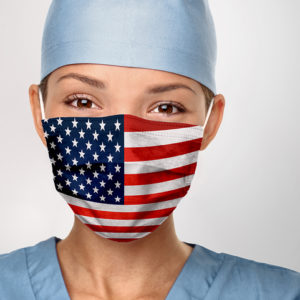The first documented case of COVID-19 infection in the United States occurred on January 20, 2020 (there is strong evidence of undetected cases in prior months). That means the country has now had one year of experience with the virus that has caused the worst pandemic since the Spanish flu 100 years ago. While we still don’t understand many things about COVID-19, in the past year we have acquired valuable knowledge about viral transmission, COVID testing, management of the critically ill, and keeping schools open. We also have vaccines – a pipedream a year ago. Here are some things we know today that we did not know when the first patient presented to a hospital in Washington state last January.
It was originally believed that people caught the virus by touching contaminated surfaces and through particle droplets transmitted through speaking, coughing and singing. Now we realize, that besides those two mechanisms inhalation of smaller particles – aerosols – are an opportunistic form of transmission, a potential problem in overcrowded spaces with poor ventilation. Masks confer a good level of protection but are not an absolute defense; handwashing and social distancing remain important adjuncts to masks. This is especially true with new virus strains that may be more contagious. Every pullback of mitigation effort when case numbers fell has been followed by epidemic resurgence.
The current status of COVID testing is far more sophisticated than a year ago, with different tests for different situations. The best test for diagnosing symptomatic patients is different from one identifying potential asymptomatic carriers who might transmit the virus. To diagnose a patient who has symptoms, a PCR assay on a nasal swab is the most practical and effective test.
To ascertain who may be actively contagious, e.g., for those concerned before family gatherings or travel, the rapid antigen test from saliva or nasal swab can detect high loads of virus in respiratory secretions. This test, although not as reliable as the gold-standard PCR test, can be performed anywhere, is inexpensive, does not require expensive equipment or special training, and provides results in under an hour. Speed and the ability to re-test generally outweigh reduced accuracy in these situations. Positive results with the rapid antigen test should be verified with the more accurate PCR-based test.
Soon, even simpler tests will be available to the public along the lines of the home pregnancy testing. Finally, there are blood antibody tests for those who want to know if they have been previously infected.
In the early phase of the pandemic, thousands of people died because they were placed on ventilators to support their virus-damaged lungs. We have discovered that the virus causes different types of lung damage. In certain patients, ventilators increase that damage. In these cases when oxygen levels become low, patients are better treated by being placed in a prone position – on the stomach – and receiving high levels of oxygen by nasal cannula. This does not work for everyone and there are still many patients who can and should be treated with ventilators (contrary to some press reports). Just not all patients.
In addition, there are currently at least three therapeutics available. Dexamethasone and remdesivir are available for hospitalized patients. For mildly symptomatic outpatients, monoclonal antibodies are effective (and are underused).
Owing to fear of COVID transmission, many schools closed early in the pandemic. But CDC data show that children in schools have a lower risk of being infected with COVID-19 than those not attending school. Moreover, children are probably less likely to transmit the virus than adults are. Children, especially younger children, need in-person learning, social contacts, meals that schools provide, and the support structure teachers create. Many schools have opened without incident, and reopening of schools must be a top priority, even before the whole country is vaccinated.
Besides adequate numbers of masks, and plenty of surface sanitizers and hand soaps, schools should have ample supplies of rapid antigen testing materials to ascertain who might be contagious, along with special areas (trailers or tents) to conduct testing. Reopening of schools may require changes in school routines: teachers rather than children moving between rooms for classes; staggered class times to minimize crowded hallways; and reconfiguration of hallways, classrooms and cafeterias to maximize personal separation. Windows should remain open when possible. Fans should be used to increase air circulation. In general, the need for special ventilation has proved unnecessary.
Hospitals have learned that if feasible, COVID patients should be separated from non-COVID patients. Current infection control strategies and activities allow many hospitals to continue the necessary care of non-COVID patients, including elective surgery and other essential diagnostic and therapeutic care.
One year ago, we didn’t have a vaccine against COVID. Now, we have two, with several others in the pipeline. The best vaccine is the one that you take. But vaccination of our entire country will take several months. Deployment of vaccines needs an urgent overhaul, with the goal of vaccinating as many as possible, as quickly as possible, starting with the most fragile and at-risk individuals. During this ramp up, we must continue our mitigation strategies–face masks, social distancing, and hand hygiene. The more people vaccinated and the better our mitigation efforts, the sooner all of society can reopen and put the nightmare of 2020 behind us.

